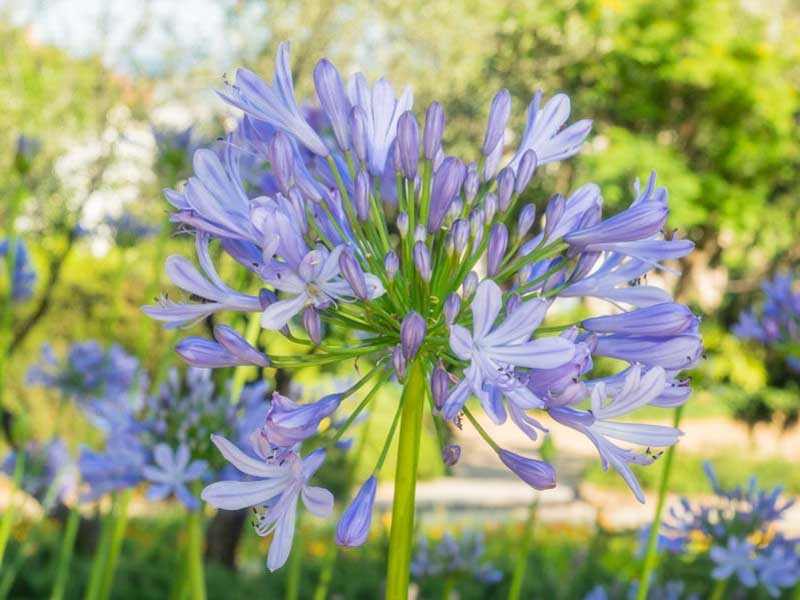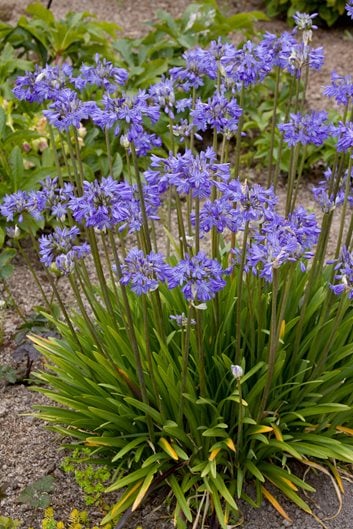Mastering the Art of Agapanthus Care: Necessary Actions for Healthy Development and Lively Blooms
In the world of gardening, the cultivation of agapanthus stands as a gratifying endeavor for those that look for to support these stylish flowering plants. From selecting the appropriate variety to mastering pruning strategies, the trip in the direction of cultivating thriving agapanthus plants is multifaceted and holds the essential to opening the complete potential of these herb gems.

Picking the Right Agapanthus Range

When choosing the best Agapanthus selection for your garden, consider elements such as climate suitability, blossom shade, and development habit. In addition, consider the climate in your area to make sure the Agapanthus selection you pick can flourish in your certain conditions. Comprehending the growth habit of various Agapanthus selections is important for correct placement within your garden.
Ideal Growing Conditions
Taking into consideration the ideal ecological requirements is important for successful Agapanthus cultivation. Agapanthus thrives in well-draining dirt with a somewhat acidic to neutral pH level. When growing, choose an area that receives full sunshine to partial shade. In hotter climates, giving some afternoon color can prevent scorching of the fallen leaves. Agapanthus plants are sensitive to chilly temperature levels and ought to be shielded from frost during winter season months.
To ensure healthy growth and vibrant flowers, plant Agapanthus bulbs at a deepness of concerning 2-4 inches and room them 8-12 inches apart. Including raw material, such as garden compost, to the soil can improve drain and fertility, promoting durable origin growth. Mulching around the base of the plants assists preserve dampness and subdues weed development. Regular watering is important, especially during the growing season, to keep the soil regularly damp however not soaked.
Watering and Feeding Tips
Maintaining proper dampness degrees and offering necessary nutrients are crucial aspects in the care routine for Agapanthus plants. When it comes to sprinkling Agapanthus, it is essential to strike an equilibrium. These plants like regularly moist dirt however are susceptible to root rot if overwatered.
Feeding Agapanthus is necessary for advertising healthy development and respected blossoms. Use a well balanced fertilizer, such as a 10-10-10 formula, in the very early spring as brand-new development emerges. Repeat this application every 6-8 weeks throughout the growing period. Prevent too much fertilization, as it can bring about lavish vegetation at the expenditure of flowers. Constantly comply with the manufacturer's guidelines for correct dilution and application techniques. By adhering to these watering and fertilizing tips, you can ensure your Agapanthus plants prosper and generate dynamic, resilient blossoms.
Pruning Strategies for Agapanthus
Pruning Agapanthus plants at the proper times and with correct techniques is important for preserving their health and wellness and promoting optimum development and blooming. The optimal time to prune Agapanthus is in late winter months or very early springtime before new growth emerges. Start by removing any type of yellowing or dead leaves near the base click of the plant. Cut them as close to the ground as feasible without damaging the emerging shoots.
For flowered stems, wait till the blooms have actually perished and after that trim them back to the base. This not just cleans up the plant's look yet additionally motivates the advancement of brand-new blossom buds. Deadheading invested blossoms can also redirect the plant's power right into generating more flowers as opposed to establishing seeds. Nonetheless, if you intend to accumulate seeds for proliferation, leave some flowers to mature and dry on the plant.
Remember to use tidy, sharp devices to make accurate cuts and reduce the threat of presenting diseases. Agapanthus. Regular trimming will aid maintain your Agapanthus looking neat and healthy and balanced while ensuring a plentiful screen of stunning blooms
Managing Typical Pests and Conditions
After guaranteeing correct trimming strategies for Agapanthus, it is important to deal with typical pests and diseases that can influence the health and wellness and vigor my explanation of these plants. One usual insect that impacts Agapanthus is the Agapanthus gall midge.
In addition, Agapanthus plants can experience from root rot if they are grown in improperly draining pipes soil. By being alert and taking punctual activity versus illness and insects, you can aid your Agapanthus plants grow and create dynamic blooms. Agapanthus.

Verdict
Finally, mastering the art of agapanthus More Bonuses care entails picking the appropriate range, offering perfect growing conditions, appropriate watering and fertilizing, proper pruning methods, and resolving typical bugs and conditions. By adhering to these crucial actions, you can make sure healthy and balanced development and lively blossoms for your agapanthus plants. Remember to on a regular basis keep track of and keep your plants to promote their general wellness and long life.
To make sure healthy and balanced growth and vivid blossoms, plant Agapanthus light bulbs at a deepness of about 2-4 inches and area them 8-12 inches apart. By following these watering and fertilizing ideas, you can ensure your Agapanthus plants thrive and generate lively, durable blooms.
One typical bug that impacts Agapanthus is the Agapanthus gall midget. In addition, Agapanthus plants can suffer from root rot if they are planted in badly draining pipes dirt. By adhering to these necessary steps, you can make sure healthy growth and vivid flowers for your agapanthus plants.